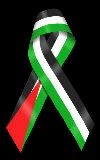
Francesc Boix Campo 1920-1951
With his Leica at Mauthausen
Francesc Boix Campo was born in Poble Sec just round the
corner from the small local library which now bears his name.
Just 16 years old when the civil war broke out, he was too young
to enlist, but he had a passion, inherited from his father, for
photography, and a camera - his inseparable Leica. A privilege in
working-class Poble Sec in the 1930s.
A militant in the communist Unified Socialist Youth movement,
he collaborated as a photographer for the magazine Juliol and
served in the Republican army during 1938.
In January 1939 he left his homeland for France with the thousands
of other refugees who, quite rightly, feared for their lives when
Franco and his fascist hordes won the war.
He was young and he survived, though so many did not, the terrible
conditions of the French internment camps set up for the Spanish
Republicans.
Though one war was lost, he knew the fight against fascism had
barely begun. He volunteered and was incorporated into the 28th
Foreign Workers Battalion of the French Army. Sent north he was
caught by the invading Nazis in 1940 and deported to the
Mauthausen-Gusen concentration camp complex in Austria.
It was the camp for the Spanish Republicans (60%) along with the
gypsies, the homosexuals, the Jehovah's Witnesses and of course the
Jews.
In his book "Spaniards in the Holocaust: the Horror on the Danube"
David Wingeate cites 23,400 registered Spanish prisoners in
Mauthausen, though some sources cite less.
But all coincide that over two-thirds died.
Francesc was lucky.
At the request of another Catalan prisoner, Antonio Garcia Alonso,
he worked in the camp´s photographic laboratory. Prisoners were
photographed on arrival, for identification and when they died, for
the record. More incriminatingly for those who would later deny
participation, official visits to the camp by Nazi officials were also
photographed.
Garcia was a professional photographer. When he arrived at
Mauthausen he was sent to work in the laboratory where a Polish
prisoner, Grabowski (who would commit suicide before the camp
was liberated) had started making secret copies of key photos.
Garcia collaborated with the clandestine archive, as did Francesc
when he joined them. It was Francesc who passed the photos and
negatives to the well-organized Spanish Communist underground
in the camp. Two young Spanish teenagers, Jacinto Cortes and Jesus
Grau, working with the brigades in the quarries outside the complex,
gradually passed the photos into the hands of Anna Pointer, a brave
and all but forgotten Austrian socialist - one of the few, so they say,
who realized what was really happening in the camp. She hid the
archive behind loose stones in her garden wall.
When Mauthausen was liberated Francesc retrieved the photos
and took them to Paris where some were published in the press.
They were used as evidence of Nazi war crimes in the Nuremberg
Trials and at Dachau during which Francesc was called to testify.
A witness. To help bring some, few, of the criminals to account.
He continued to work as a photographer in Paris after the war, but
the hardship and the suffering had taken their toll.
He was just 30 years old when he died.
There is no lack of photographic evidence of what recently happened
in Gaza.
Enough to prove war crimes.
Yesterday UN human rights investigators presented a detailed
report, questioning the legality of the Israeli offensive. The Guardian
have just published their own investigation.
Even the Israeli military have twice issued reports in the last week
which include testimonies of the criminal tactics employed.
But who will bring these new Jews to account?
Tuesday, 24 March 2009
Accountability. Francesc Boix.
Subscribe to:
Post Comments (Atom)

No comments:
Post a Comment